Conveniently (presciently, even) timed for the dive stand-down, I was scheduled with a land interlude this week: back in the Virgin Islands for sea turtle patrolling in Buck Island Reef National Monument, off St. Croix.
The turtle project on Buck Island has been a continuous effort since 1988 to identify and monitor all the nesting females on the island. Each female is identified by tags on all four flippers and a microchip PIT (passive integrated transponder) tag, as well as photos and a biopsy for genetic data. The goal is to monitor all turtle activity on the island every night, which provides a comprehensive picture of individual females’ nesting patterns within a season, as well as long-term trends in where turtles nest and how often. Researchers must patrol the island’s beaches from sunset to sunrise during nesting season, recording the location and date of each female’s nests and false crawls. No one can leave the island if turtles are still on the beach, so the shift goes from 6pm to anywhere between 4am and 8am. The Buck Island scientists and interns “embrace the darkness” for a truly brutal twelve week research season, and I was joining them around week three.
The afternoon I arrived in St. Croix, Buck Island biologist Ian Lundgren greeted me in his beflamed pickup truck and briefed me on turtle protocol. I had lived with Ian for the first week of fish blitz on St. John and he had regaled us all with stories and pictures of his beach pup Pedey, with whom, despite considerable hype, I immediately fell in love. I decided to jump right in with turtle patrols, so after a quick walk for Pedey we headed to the marina, where I met interns Sarah Steele and Gabe Lundgren and volunteer Sara Sperber. We loaded the boat with water, turtle data sheets, and radios before heading to Buck Island, about 1.5 miles away. Everyone works a rotating schedule to avoid full nocturnal insanity, so in the subsequent nights I also worked with biological technician Clay Pollock and interns Tessa Code and Alex Gulick.
The first step each evening is to go around to all the boats anchored on the island’s west beach, a popular tourist spot. We explain that turtles nest on this beach and ask any boaters planning to stay past sunset to use low lights and not play loud music after dark to avoid disturbing any turtles or hatchlings. People were generally excited and interested to hear about the turtles and happy to dim their lights.
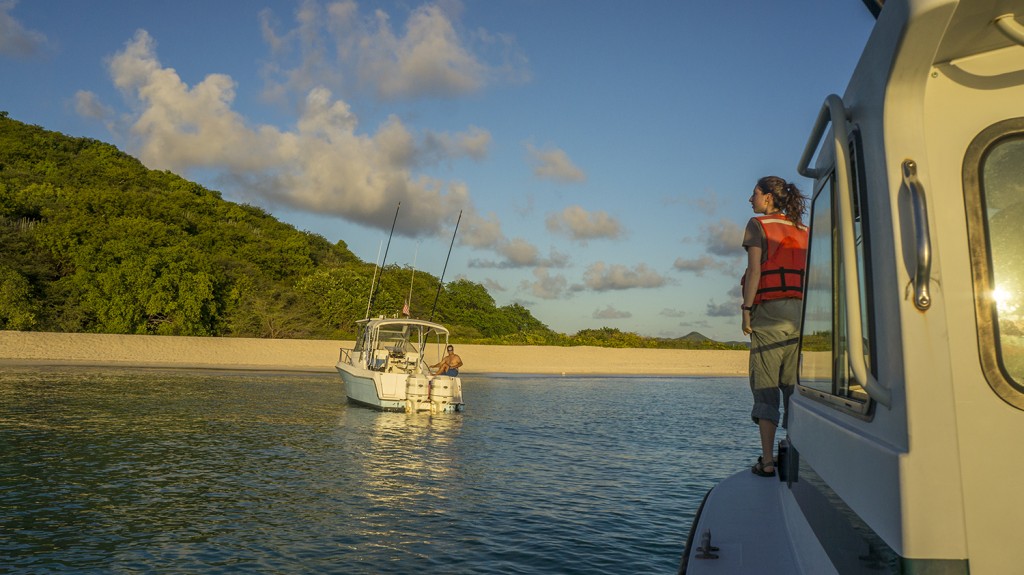
Sea turtle intern Tessa Code asks boaters that will stay after sunset to keep their lights and music low.
We then anchor on the NPS dock, which is roughly in the middle of the island’s stretch of beach. This dock is our camp for the night. Far too hardcore for beanbag chairs, the Buck Island team curls up on the concrete for their hour between patrols. Just like in the Dry Tortugas, we patrol the beaches every half hour, but since Buck is much larger, it requires a three-person rotation. The schedule is two hours on patrol, one hour off, but the person on break is often called to assist if there are multiple turtles on the beach or a patrol must be finished while someone does a turtle work up. Turtles that are new to the beach or haven’t received their full array of tags and tests must be fully poked, punctured, and measured, and since we only work on them in the window between when they start laying eggs and when they leave the beach, things can get hairy with many turtles on the island. A researcher might spend several hours running back and forth between digging turtles waiting for them to start laying, and then must choreograph reinforcements to ensure that each turtle receives the proper attention without any lapse in beach patrols.
Every park and my few previous sea turtle experiences have had different policies on acceptable turtle decorum, and Buck Island is by far the most hands-on. This type of data collection—measurements, reading flipper tags—requires getting up close and personal with the turtles. Reading a turtle’s flipper tags often involves crawling on one’s belly behind her, grabbing a rear flipper, and reaching up to its base where the tag is located. The turtle doesn’t seem to notice if this is done while she’s moving said flipper, which means identification is a sandy scramble. Attaching or replacing tags requires the same crawling and flipper grabbing, but with pliers. The biopsy entails punching out a small tissue sample at the edge of a flipper, not an easy task while the turtle is moving. We also measure the turtle’s carapaces (shells), which for larger turtles more or less means giving them a hug, and for very large turtles both a hug and a straddle. Identifying each turtle is essential for data collection and is to be achieved at all costs. If an unidentified turtle makes moves toward the water (usually this means a false crawl) we do everything we can to keep her on the beach long enough for someone to read a tag. On my first night I had to sit on a green to slow her progress as Sarah scrabbled for her flippers.
The team takes the project a step beyond data collection to actively ensure nesting activities in optimal locations. If a turtle is having difficulty digging near vegetation, they’ll cut roots and even help dig to aid her nesting. If a turtle is digging in a suboptimal spot, perhaps too close to the water or on top of previous nests, they’ll discourage her by sneaking rocks or coconuts in the hole. Upon feeling these obstacles the turtle will generally abandon the spot and try again. If a turtle has already started laying eggs in a bad location, they’ll collect the eggs as she lays them or dig them up after she’s done and rebury them in a better spot. They’ll even fix false crawls: they’ve discovered that curling up in front of a water-bound turtle and pretending to be a rock activates some deeply ingrained turtle thought process that directs her turn around and try to nest again.
Turtles may also require redirection if they get disoriented in the vegetation. One night I spent almost two hours monitoring a green as she started and abandoned body pit after body pit (the precursor to a nest), crawling deep into the bushes, before abruptly and purposefully taking off toward the hills. Calling upon my training, I got in front of her and did my best rock impression, but to no avail: she advanced inexorably, tank-like, and I was forced to switch to evasive tactics that were almost entirely successful. I radioed for reinforcements, and Clay rushed to my assistance. He employed more advanced techniques like tickling her face and shoulders to discourage her forward progress, which she bore with an exasperated sigh and staunchly held her course. We then had to resort to forcible turning maneuvers. Clay estimates that she was about 350 lbs, and in the low, dense vegetation it was difficult to get any sort of leverage. She fought against us, surging further inland every time we pushed her back. It was clear she was getting tired and stressed, and I grew increasingly concerned that we would drive her to irreversible entanglement. Finally, after over an hour of struggling, we managed to shove her into a clear pathway and she laboriously but steadily made her way back into the water.
It should be noted that all of this patrolling and crawling through vegetation in low red light carries the risk of contact with the Virgin Islands’ dozens of species of extremely spiny and/or caustic plants. “Hey, how’s that rash?” is standard greeting among the interns.
On another memorable night, a leatherback came up to nest. The leatherback nesting season is much earlier—this is when we expect leatherback hatchlings to emerge—so this was a rare treat. She was tiny by leatherback standards, likely very young, which may explain why she was digging her belated nest barely clear of the berm, where it would be washed away as soon as the tides rose. We would need to relocate the nest, so Sarah and I donned rubber gloves and stealthily removed the cue ball eggs from the shoulder-deep nest, working as quickly as we could to get them all before she started burying them. Sarah had to sit on the turtle to take her measurements, fielding slaps from her humongous front flippers as she covered the nest. We brought our stash of eggs further up the beach to rebury them while the leatherback made sand angels as she struggled to find the water a few feet away. The sound of her snorts and groans was incredible: this must be how dinosaurs breathed. The nest successfully relocated, Tessa, Sarah, and I took a moment to appreciate this awesome occasion. Turtle selfies may have occurred. The leatherback stayed on the beach for some time, seemingly unable to identify the water even as it lapped over her. After turning back toward the land a few more times, she made her exit as the sun rose. Exhausted, we returned to St. Croix to sleep away the daylight.
Time on the island consisted mostly of sleeping, with late lunches and occasional trips into town for dinner for those with a scheduled night off. Since I was living in different park housing than the other interns, I was given custody of another government vehicle (the G-ride), with which I was entrusted to transport myself around the island. Given my dismal directional sense and chronic left/right confusion I was initially apprehensive about navigating unfamiliar streets on the left side of the road, but I adjusted surprisingly quickly, aided in no small part by finding the local reggae station (WSTX FM 100, the Soul of the Caribbean). Successfully making my way home at five in the morning after the first night of turtles may be my greatest achievement to date.
This concludes my Caribbean tour; I’m headed to the Pacific. Thanks so much to Ian and Clay for letting me tag along on patrols this week, and to the amazing interns for their delightful company and for driving me to the airport, twice.

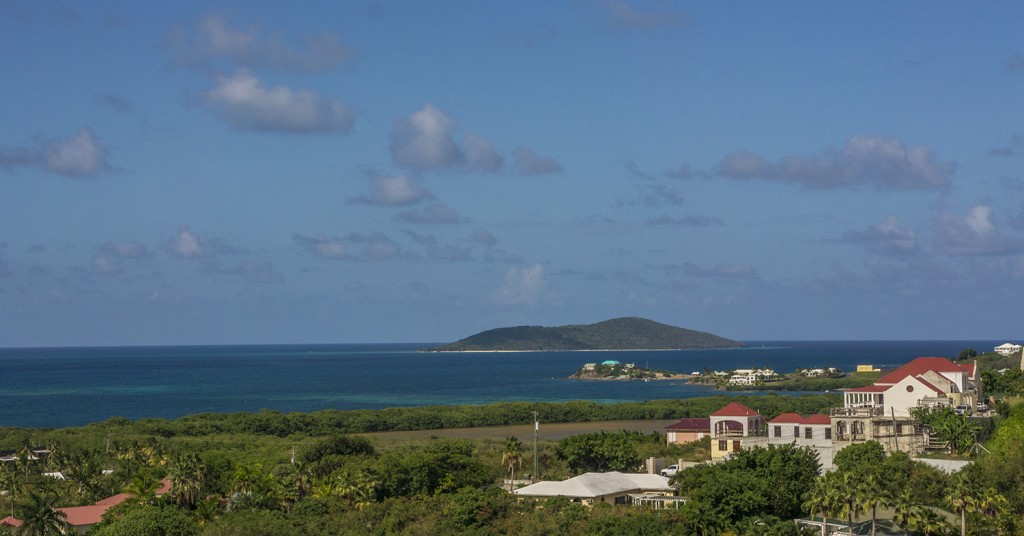

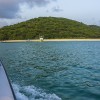
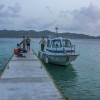
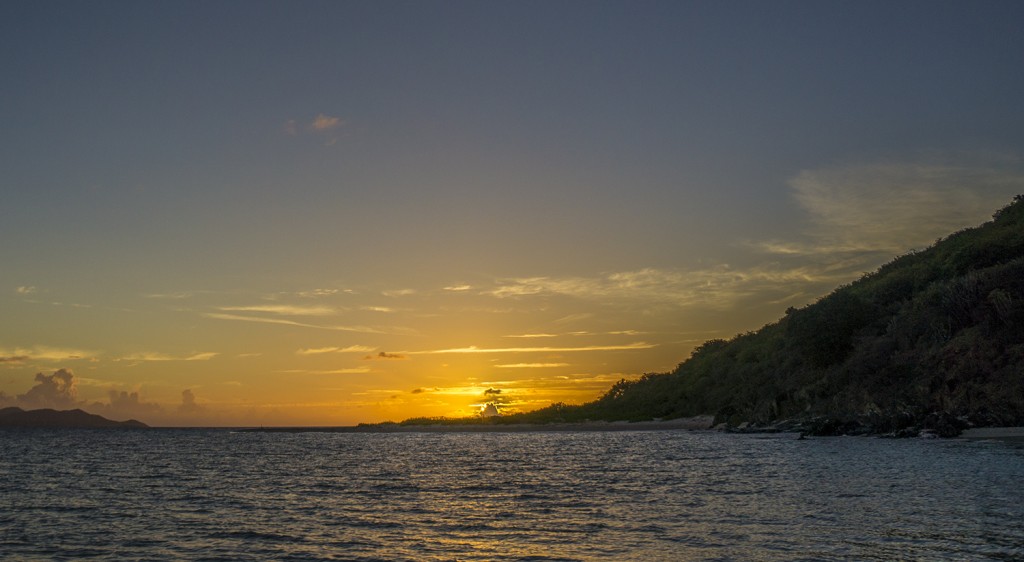
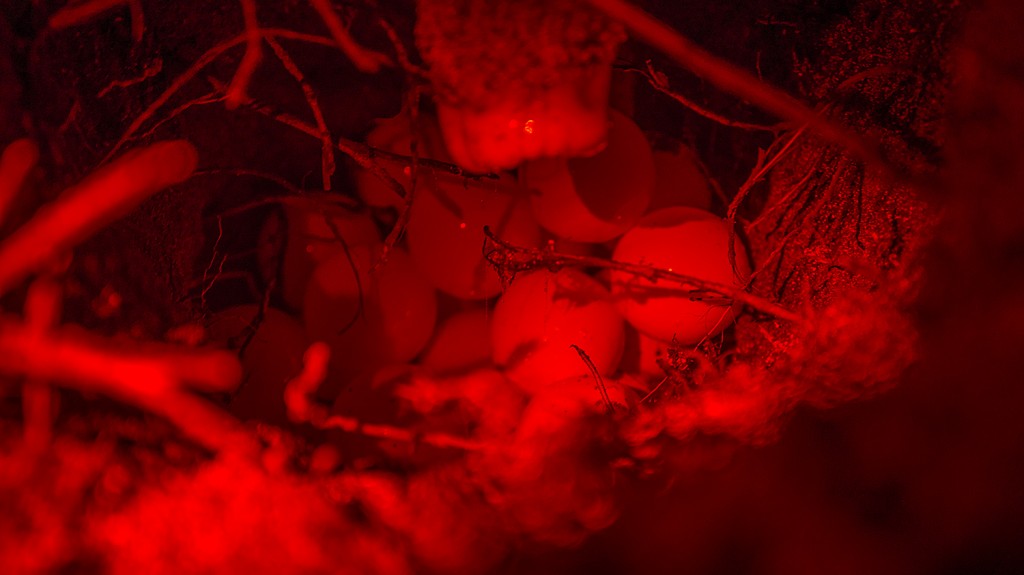
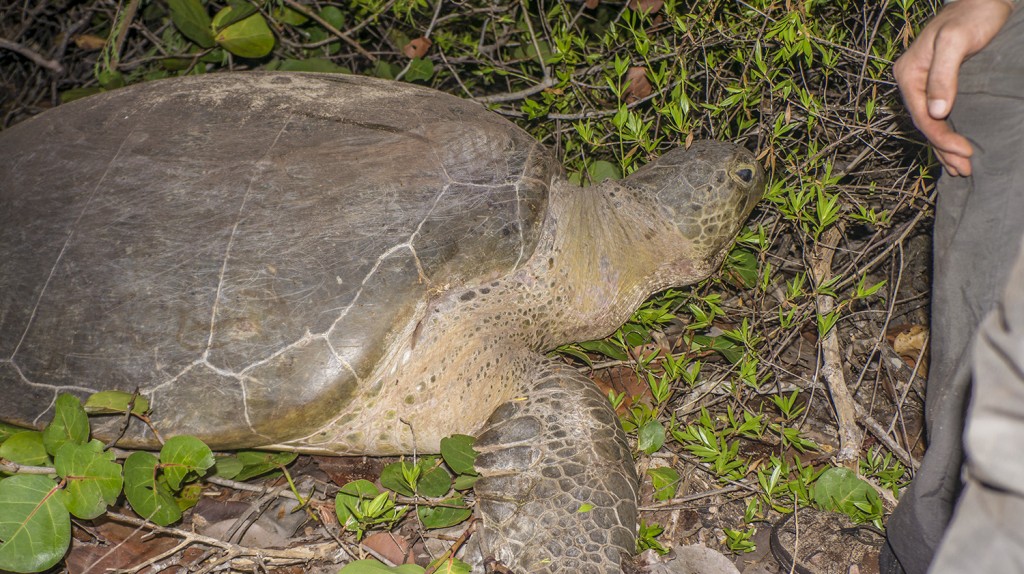
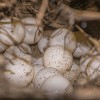
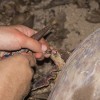
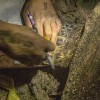

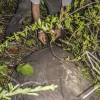
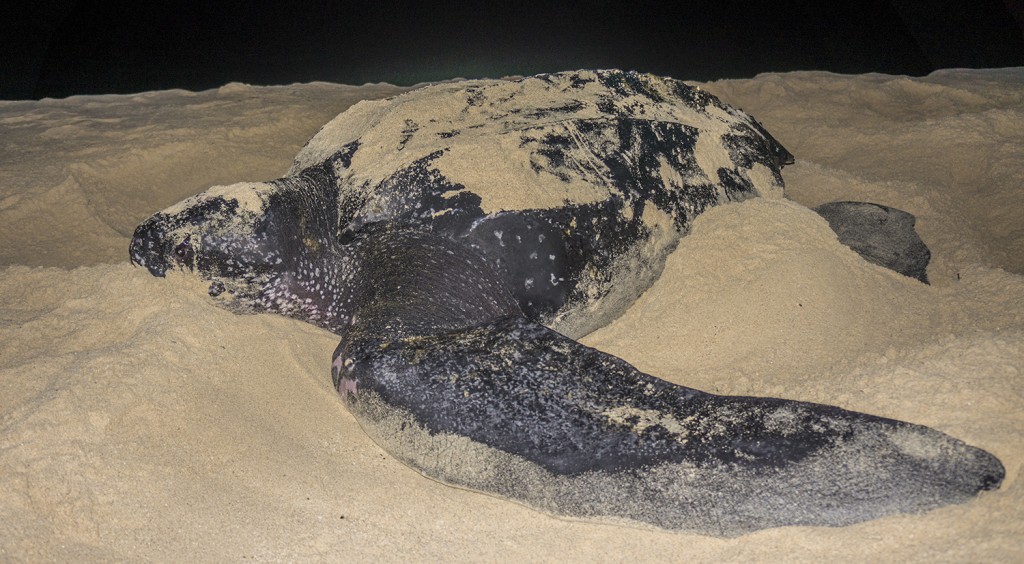
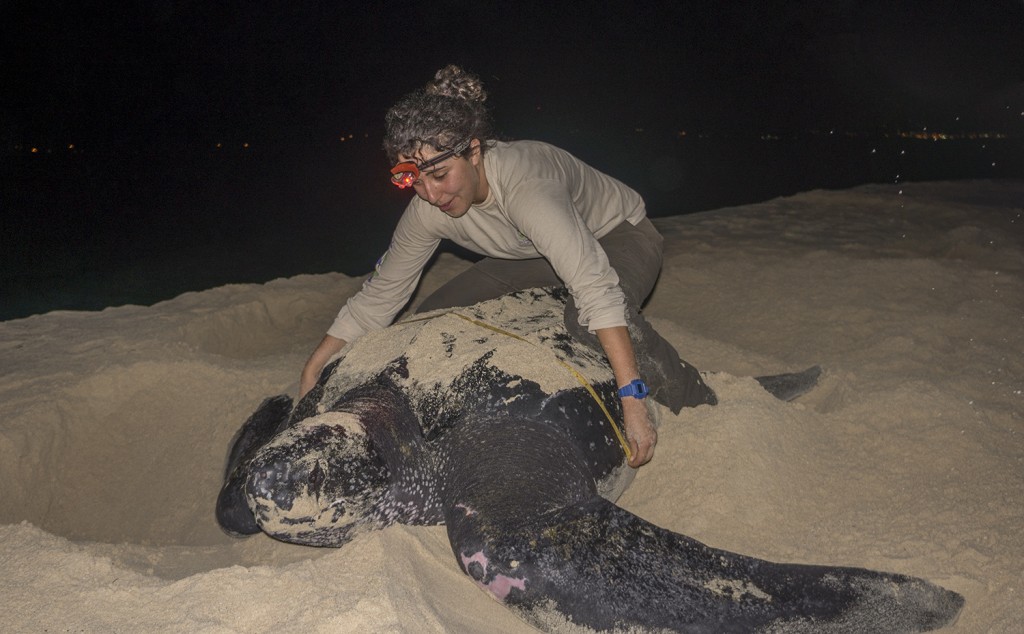
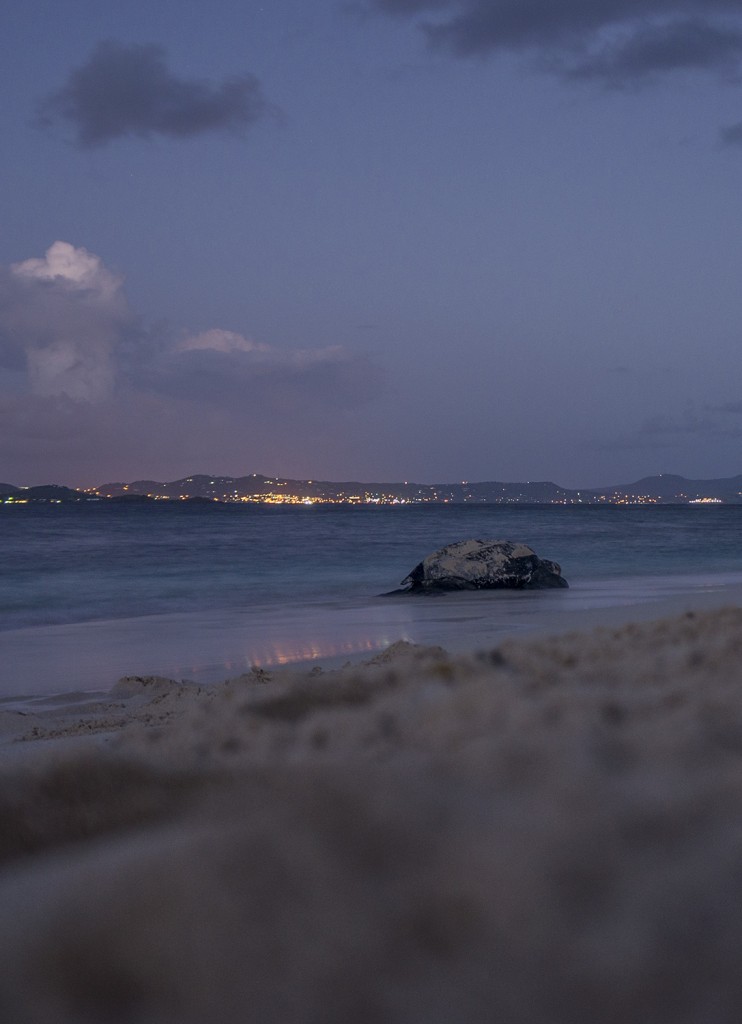
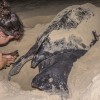
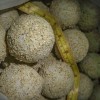
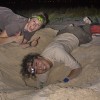
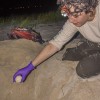
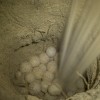

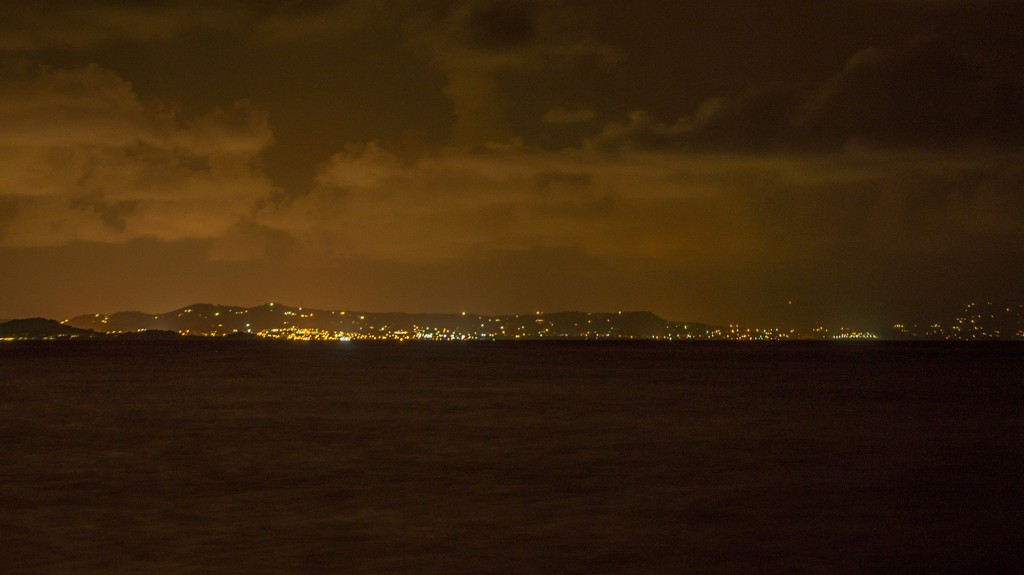
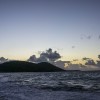


Great article, very happy you visited. Please visit again!
What an amazing phenomenon?! Such beautiful creatures!